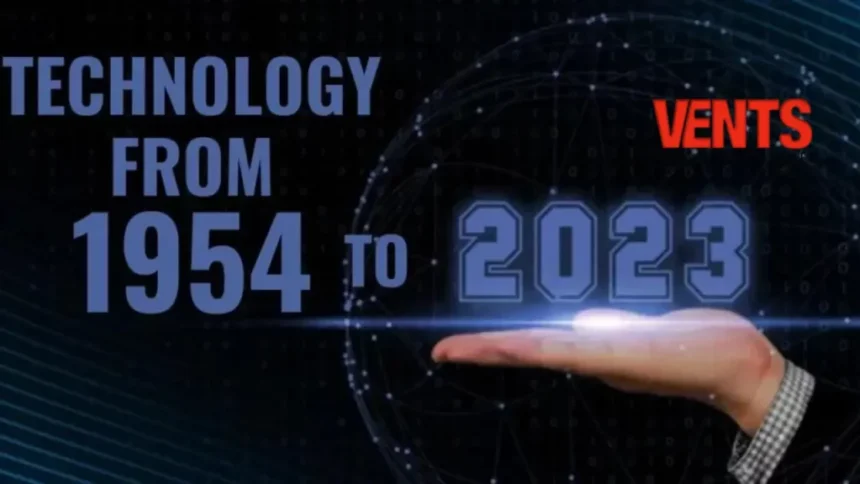Introduction to the Events of 2023-1954
The years between 2023 and 1954 were pivotal in shaping the world we live in today. From groundbreaking technological innovations to significant cultural shifts, this period was rich with transformative events. As we reflect on these moments, it’s essential to understand how they influenced modern society and our daily lives. In this guide, we’ll dive into major world events that defined an era, explore advancements that changed communication and transportation forever, recognize the key political figures who left their mark on history, and uncover lessons learned from those challenging times. Join us as we take a journey through the fascinating timeline of 2023-1954!
Major World Events in 2023-1954
The years from 2023 to 1954 were transformative, marked by pivotal moments that reshaped global dynamics. The end of World War II in the mid-1940s set the stage for a new world order. Nations began redefining their roles on the international stage.
In the early ’50s, the Korean War erupted, dividing Korea and igniting Cold War tensions. This conflict showcased ideological battles between communism and democracy.
Fast forward to more recent times, where climate change discussions gained momentum in 2023. Global events such as COP summits highlighted urgent environmental challenges we must address collectively.
Civil rights movements surged during these decades as marginalized voices called for equality and justice. Each event contributed uniquely, weaving a rich tapestry of history that continues to influence our present-day realities.
Technological Advancements during this Time Period
The years 2023-1954 witnessed groundbreaking technological advancements that shaped the world. The rise of computers marked a significant turning point. These machines transitioned from large, room-sized behemoths to personal devices that eventually fit in our pockets.
Telecommunication also evolved rapidly. The introduction of television transformed entertainment and information dissemination, bringing global events into living rooms across the globe. It was no longer just about reading newspapers; people could now see history unfold before their eyes.
In transportation, innovations like jet engines revolutionized travel. Flights became faster and more accessible than ever before, shrinking distances significantly.
Healthcare technology made strides too, especially with antibiotics emerging as lifesavers during this period. They changed the way we approached medicine and disease prevention.
These developments laid crucial foundations for future generations, making life more interconnected and efficient than anyone had previously imagined.
Cultural and Social Shifts
The cultural landscape between 2023 and 1954 witnessed profound shifts. Art, music, and literature reflected changing societal norms and values. Jazz grew popular in the earlier decades, while rock ‘n’ roll took center stage in the post-war years.
Social movements also gained momentum during this time. The fight for civil rights ignited passion across various communities. Voices that had long been silenced began to rise against inequality and injustice.
Television emerged as a dominant medium, shaping public perception and influencing lifestyles. Families gathered around their screens to watch news broadcasts and entertainment shows, creating shared experiences.
Fashion trends evolved rapidly as youth culture flourished. Styles became bolder, reflecting newfound freedom of expression among younger generations.
These transformations laid the groundwork for future generations to challenge conventions further and embrace diversity in all its forms. Each shift contributed uniquely to our collective narrative today.
Key Political Figures and Movements
The period between 2023 and 1954 saw a myriad of influential political figures shaping the course of history. Leaders like Franklin D. Roosevelt emerged during the Great Depression, guiding America through tumultuous times with his New Deal policies.
Across the ocean, Winston Churchill’s resolute leadership during World War II united Britain against Nazi aggression. His speeches rallied not just a nation but inspired millions globally.
In Asia, leaders such as Mao Zedong began to solidify their power amidst revolutionary fervor. The Communist Party’s rise marked a significant shift in global politics that still resonates today.
Grassroots movements also gained momentum. Civil rights activists fought tirelessly for justice and equality, laying groundwork for future generations seeking social change.
These figures and movements were instrumental in redefining governance and societal norms across continents, leaving an indelible mark on modern political landscapes.
Impact on Modern Society
The events of 2023-1954 have shaped the world we live in today. Many social movements that emerged during this period laid the groundwork for ongoing discussions about equality and justice.
Technological breakthroughs from these decades revolutionized communication and transportation, enabling globalization. The ripple effects are still visible in how we connect with each other across borders.
Economically, shifts initiated in this era continue to influence trade policies and labor rights worldwide. The rise of multinational corporations began here, impacting local economies significantly.
Culturally, artistic expressions reflected societal changes and fostered a sense of identity among diverse groups. This legacy continues to inspire new generations seeking representation within their communities.
Political landscapes were redefined as leaders rose to prominence based on ideals established during these years. Their choices still affect international relations today, reminding us of history’s persistent relevance in modern governance.
Lessons Learned from the Past for the Future
History teaches us invaluable lessons about resilience and adaptation. The challenges faced from 2023-1954 shaped societies in profound ways. Understanding these experiences can guide future actions.
Conflict often led to collaboration in unexpected places. Nations learned that working together is essential for peace and progress. This lesson remains relevant today, as global issues require united solutions.
Technological advancements during this era also remind us of the importance of innovation. Embracing change fosters growth and development across all sectors.
Social movements highlighted the power of collective voices advocating for justice. These struggles continue to resonate, emphasizing the need for ongoing activism and awareness.
Recognizing past mistakes helps prevent their repetition. Awareness encourages thoughtful decision-making that prioritizes long-term outcomes over short-term gains.
The echoes of history call on us to learn, adapt, and forge a better path forward through informed choices grounded in experience.
Conclusion
The events of 2023-1954 have shaped our world in profound ways. Major global occurrences, from wars to peace treaties, left indelible marks on nations and people alike. Technological advancements during this era not only transformed industries but also altered daily life for millions. The cultural and social shifts witnessed were instrumental in paving the way for new ideologies and lifestyles that continue to resonate today.
Key political figures emerged as leaders who would influence their countries’ trajectories, while movements began that challenged established norms and called for change. These developments laid a foundation for many modern societal structures we navigate now.
As we reflect on this extensive timeline, the lessons learned remain crucial. Understanding how past events interconnect with present challenges can inform future decisions, encouraging us to strive for progress while honoring history’s truths.
Examining 2023-1954 reveals an intricate tapestry of human experience—one filled with triumphs and tribulations that remind us of the resilience required to face whatever comes next.




